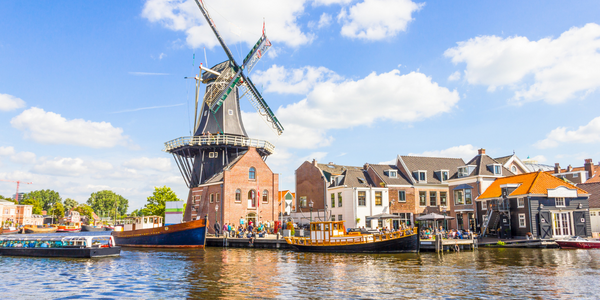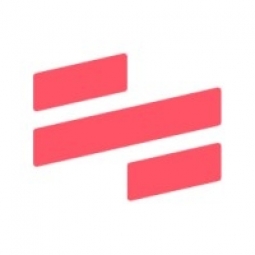Technology Category
- Automation & Control - Human Machine Interface (HMI)
Applicable Industries
- Cities & Municipalities
- Education
Use Cases
- Time Sensitive Networking
- Virtual Training
Services
- Training
About The Customer
D300 is a public school district located in the Chicago area. It comprises 27 schools and serves 20,000 students from pre-K to 12th grade. The district has a dedicated IT department responsible for helping 3,000 faculty members access and use various technologies and tools. The IT department consists of three core teams: Student Information Specialists, who train end users to enter required information into the student information system; Help Desk Specialists, who provide service and support for technologies used by staff and students; and Digital Learning Coaches, who assist teachers in integrating technology into instructional programs.
The Challenge
D300, a public school district in Illinois, faced a significant challenge in training its 3,000 faculty members on various technologies and tools. The district, which spans 27 schools and serves 20,000 students, had a dedicated IT department responsible for this task. However, the process of building training and process materials was arduous and time-consuming. The IT team had to manually create how-to guides, take screenshots, and record video screen shares using tools like Camtasia and WeVideo. This process was not only labor-intensive but also inefficient, with each guide taking up to 30 minutes to create and sometimes even 1 or 2 hours for additional review. Furthermore, the ever-changing nature of their software meant that much of the effort invested in creating these guides became obsolete when the user interface or processes changed.
The Solution
The D300 IT team turned to Scribe, a revolutionary solution that transformed their workflow. Scribe allowed the team to create comprehensive how-to guides in a fraction of the time it previously took. The time investment was significantly reduced to just 10 minutes per guide. Scribe also enabled the team to customize their guides based on unique faculty needs, emphasizing district-specific processes and procedures. Moreover, Scribe’s analytical data allowed the D300 team to monitor the success of each guide and implement needed updates or changes based on user feedback. When it came to keeping documentation up to date, Scribe enabled the team to effortlessly maintain current documentation. They could promptly re-capture the first step of every Scribe in just a few seconds, ensuring all documentation remained relevant and accurate. Lastly, Scribe's 'Guide Me' feature made it easy for faculty members to follow along with the process without having to switch tabs.
Operational Impact
Quantitative Benefit

Case Study missing?
Start adding your own!
Register with your work email and create a new case study profile for your business.
Related Case Studies.

Case Study
Turning A Stadium Into A Smart Building
Honeywell created what it called the “intelligent system” for the National Stadium in Beijing, China, turning the venue for the opening and closing events at the 2008 Summer Olympics into a “smart building.” Designed by highly controversial artist Ai Weiwei, the “Bird’s Nest” remains one of the most impressive feats of stadium architecture in the world. The 250,000 square meter structure housed more than 100,000 athletes and spectators at a time. To accommodate such capacity, China turned to Honeywell’s EBI Integrated Building Management System to create an integrated “intelligent system” for improved building security, safety and energy efficiency.
.png)
Case Study
Smart Street Light Network (Copenhagen)
Key stakeholders are taking a comprehensive approach to rethinking smart city innovation. City leaders have collaborated through partnerships involving government, research institutions and solution providers. The Copenhagen Solutions Lab is one of the leading organizations at the forefront of this movement. By bringing together manufacturers with municipal buyers, the Copenhagen Solutions Lab has catalyzed the development and deployment of next-generation smart city innovations. Copenhagen is leveraging this unique approach to accelerate the implementation of smart city solutions. One of the primary focus areas is LED street lighting.

Case Study
Buoy Status Monitoring with LoRa
The Netherlands are well-known for their inland waterways, canals, sluices and of course port activities. The Dutch Ministry of Infrastructure indicates that there are thousands of buoys and fixed items in and near water environments that would profit from IoT monitoring. One of the problems with buoys for example, is that they get hit by ships and the anchor cable breaks. Without connectivity, it takes quite some time to find out that something has happened with that buoy. Not to mention the costs of renting a boat to go to the buoy to fix it. Another important issue, is that there is no real-time monitoring of the buoys at this moment. Only by physically visiting the object on the water, one gains insight in its status.

Case Study
Barcelona Case Study
Barcelona’s heavy traffic and its associated high levels of pollution were the primary factors that motivated some companies and universities to work on strategies for improving traffic in the city centre. Bitcarrier is one of the technologies involved in the In4Mo Project, whose main objective is to develop the applications that form the core of smart mobility, one of the fundamental pillars of the smart city concept.

Case Study
China Mobile Smart Parking
Smart Parking, powered by NB-IoT technology, is making it easier for drivers to find free parking spots. Cities can better manage their parking assets and maximize the revenue available to them as a result. Drivers searching for parking create congestion and pollution by circling and hunting for available parking. Smart Parking services are able to significantly ease these problems by guiding a driver directly to a parking space.








